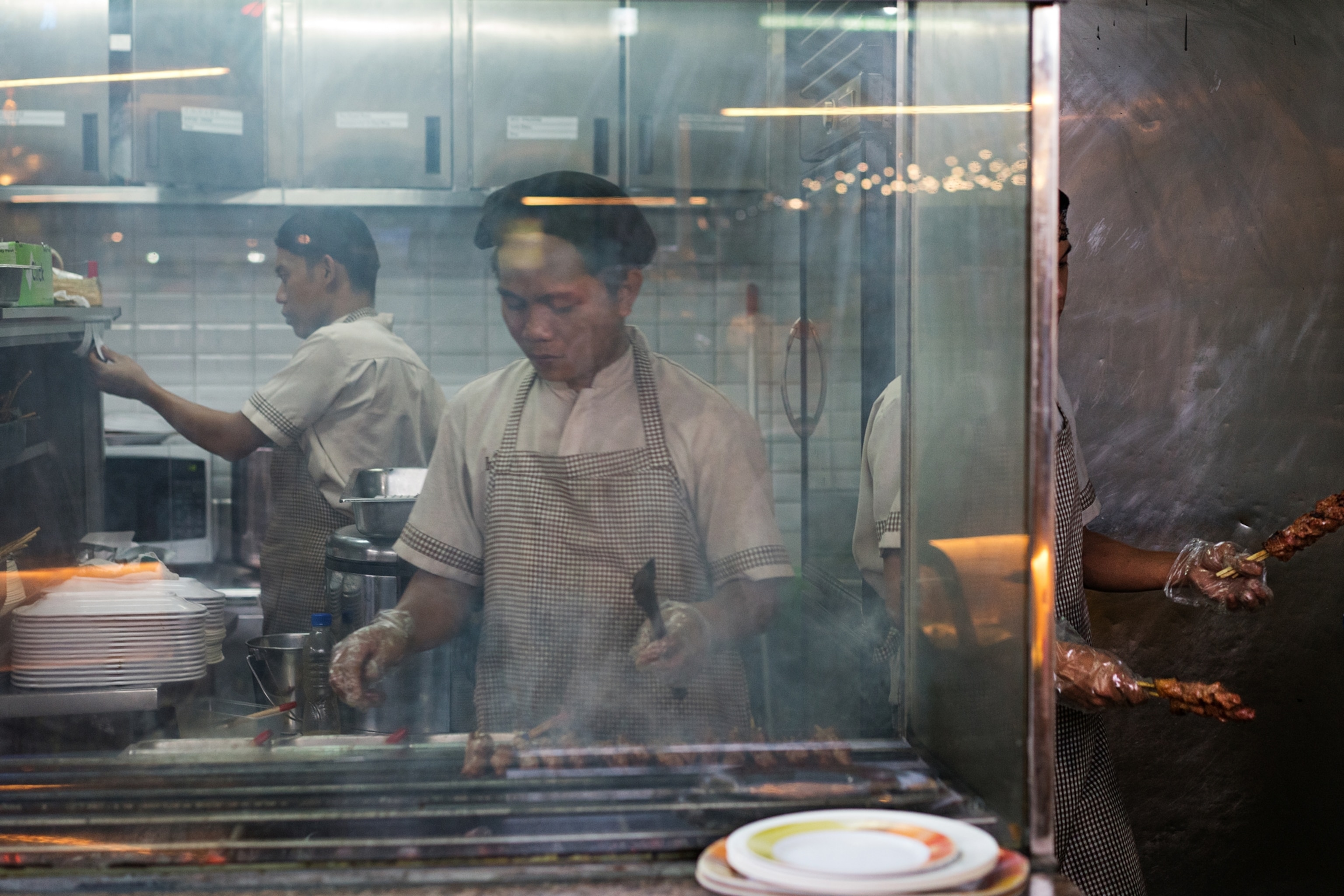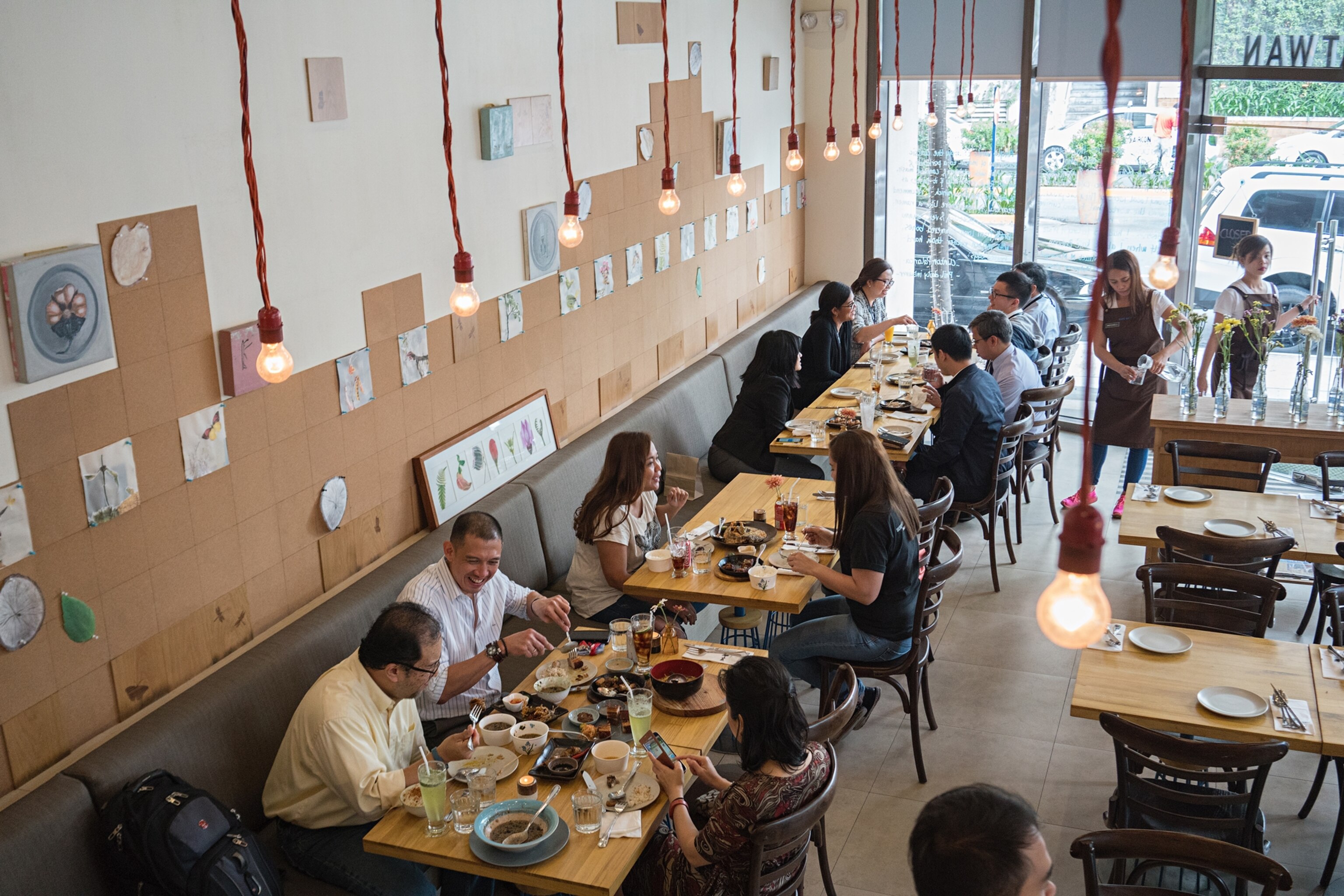
What's the secret of Filipino food in Manila?
Sour is power in the delicious dishes of the Philippines.
Sour tends to be an underrated flavor—except in the Philippines.
At this very moment, a good number of the 12 million people in Metro Manila are craving sour. Manileños bite into a tart, crisp slice of green mango dabbed with fermented shrimp paste for an afternoon snack. They slurp a hearty bowl of tamarind soup at a Sunday after-church lunch. They crunch fried fish dipped in chili-spiked palm vinegar at a cafeteria-style turo-turo, where customers simply point (turo) at their dish of choice. (Check out our travel guide to the Philippines.)
Sour appears on menus everywhere in the Philippines. Each dish has a distinct taste and degree of tanginess based on the region and the season. In Manila, sour can be found both at a design-centric restaurant in the financial district of Makati and at a Baclaran carinderia, a food stall where jeepney and pedicab drivers sit on benches for a meal and a break from the city’s paralyzing traffic.
When nature handed this Southeast Asian country lemons—and a tropical bounty of other acidic fruits—the Filipinos made lemonade. And seviche. And sour fried chicken.
That last dish appears on the menu at Kafé Batwan, in Makati. Chef JP Anglo pays homage to his roots on Negros, the fourth largest of the Philippines’ 7,107 islands, by featuring the native batwan, a hard fruit smaller than a lime. Anglo marinates the chicken in batwan juice, coconut vinegar, and lemongrass salt, then fries it crisp for a surprisingly delicious twist. The stairs leading up to a second-floor dining room showcase bottles of spicy housemade vinegar and Don Papa, a small-batch rum named after the shaman and revolutionary who in 1896 freed from the Spaniards the island of Negros, where this sugarcane product is distilled.
“Sourness is the main flavor that distinguishes us from other Asian cuisines,” says Amy Besa, cookbook author and co-owner of Purple Yam in Manila’s buzzing retail district of Malate. Located in Besa’s ancestral home, the restaurant displays original artworks by acclaimed Filipino modernist Botong Francisco, Besa’s godfather.
Besa and her husband, chef Romy Dorotan, alternate between Manila and Brooklyn, where the original Purple Yam has drawn fans of the couple’s fresh and elegantly updated Filipino dishes since 2009 (and before that at their now shuttered SoHo restaurant, Cendrillon). (Read about the best Filipino restaurants in the United States.)
“The holy trinity of native Filipino foods,” says Besa, is adobo, sinigang, and kinilaw (a cured seafood dish similar to seviche). “All three dishes are cooked and eaten by all classes of society from the very rich to the very poor,” she says. Dorotan’s recipe for chicken adobo—meat braised in rice vinegar, garlic, pepper, and coconut milk—is possibly the most published and shared of all Filipino adobos.
Many Filipinos believe that imbibing a steaming sour soup, such as sinigang, helps cool the body—and whet the appetite.
Sourness is the main flavor that distinguishes us from other Asian cuisines.Amy Besa, Cookbook Author and Restaurateur
Chefs Isaiah Ortega and Korinne Lirio-Ortega believe in the power of sour soup so much that they opened Sinigang restaurant in BF Homes Parañaque, a well-off Manila neighborhood that has seen numerous restaurants open in the past year.
Prior to the restaurant’s launch, Ortega read up on all things sinigang and traveled the provinces. He says he found “more than 20 different souring agents used for sinigang,” including pineapple, herbs, tree bark, and others he’d never heard of such as libas (hog plum), bignay (Chinese laurel), and katmon (elephant apple). The Ortegas had the sour fruits shipped to Manila in sacks.
Patrick Roa’s food awakening happened during his search for the best seviche. “I can make you 50 kinds of seviche, if you want,” Roa says. He and his wife, Pia Temporal Roa, opened Patricio’s Cevicheria in Fort Bonifacio to share his findings. The Roas also serve Hawaiian poke and regional Filipino kinilaw. Their superstar dish: kinilaw de Oro, fresh tuna cured in coconut vinegar with fruits and roots indigenous to the region around Cagayan de Oro, where Patrick grew up.
Whether you’re dining at Harbour Square with a view of Manila Bay or meeting for lunch in the posh Rockwell Center area of Makati, it’s perfectly natural to ask the servers for some fish sauce (patis) to accompany your meal. This will come on a small plate with a sweet-sour calamansi and one little red hot pepper slit in the middle to let you temper the heat.
“The ritual of sawsawan (dipping sauce) is an important part of Filipino meals,” says Pia Lim-Castillo, who teaches cooking at her home kitchen in Forbes Park, Makati. “By adjusting the sauce, the eater partakes in the cooking.”
- National Geographic Expeditions











